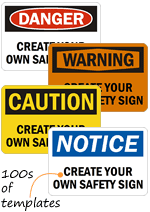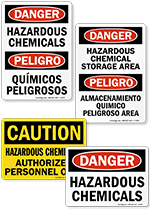What fixed ladder hazards can you see? #HazardSpotting
#HazardSpotting is a community safety initiative that helps raise awareness about dangerous workplace safety violations. Our audience submits pictures, and we write an article with insight from featured safety professionals. In our tenth installment, we’re highlighting the ladder hazards in a building’s fixed roof access.
We’ve spent a lot of time here at MySafetySign concentrating on the hazards that any one of us could spot on our daily commute. It’s rare that our investigations take us past the entrance to a construction site, or the plywood barricade that divides us from most of the buildings being erected on our streets.
Sometimes, though, the real ongoing safety concerns are happening inside the buildings that we walk past every day. Brian R. Bennett, a safety consultant who has been following along with our series, recently gave us a sneak peek inside a building he visited. And what he found there is a classic example of the battle that safety experts are always fighting: the hazards that lead to serious accidents are often hidden in plain sight. Brian took the following photograph as he and an HVAC engineer were headed to the roof to investigate some cooling units:

We found a few serious problems in this seemingly benign stairwell. [Photo courtesy of Brian R. Bennett]
Ladder length and safety devices
Let’s take a closer look at the ladder mounted to the wall. This is referred to as a fixed ladder, since it’s attached to the wall to provide permanent access to the roof. OSHA standards regarding fixed ladders will tell you that:
If the total length of the climb on a fixed ladder equals or exceeds 24 feet (7.3 m), the ladder must be equipped with ladder safety devices; or self-retracting lifelines and rest platforms at intervals not to exceed 150 feet (45.7 m); or a cage or well and multiple ladder sections with each ladder section not to exceed 50 feet (15.2 m) in length.
[From the Guide to OSHA Rules: Stairways and Ladders]
We can’t say with certainty the exact measurements of the ladder, of course, but we can make a fairly educated guess that each rung is roughly 12 inches in height, and there are about 14 rungs visible in the photograph. So let’s assume the ladder is 14 feet to the roof access hatch, and hopefully a few feet extended above the roof as required by OSHA. That’s not exactly the 24 feet that would require ladder safety devices like a cage.
Ladder fall hazards
However, we’re ignoring an even more critical hazard in this photograph. Look at the position of the ladder relative to the stairwell. It looks like the ladder is no more than a foot or so from the railing, and as our worker starts climbing that fixed ladder, they’re immediately exposing themselves to a much more severe fall hazard. As Brian put it, “once you take your first step on the ladder, you are in violation of OSHA fall protection above six foot.”
OSHA requires that workers are protected from fall hazards and falling objects whenever the employee is six feet or more above a lower level. Suddenly, the benign photo of the stairwell takes on some very grim proportions with workers routinely accessing the roof without any lifelines or cage protection around this fixed ladder.
Fixed ladders must be provided with cages, wells, ladder safety devices or self-retracting lifelines where the length of climb is less than 24 feet (7.3 m) but the top of the ladder is at a distance greater than 24 feet (7.3 m) above lower levels.
[From the Guide to OSHA Rules: Stairways and Ladders]
So, while the ladder is probably around 14-17 feet in height, it’s adjacent to an estimated 8-10 foot drop through the stairwell, which puts it well above the requirements for extra safety devices such as a cage. This language enforces Brian’s original instinct, that the drop through the adjacent stairwell is dangerous enough to warrant extra security measures.
Outward swinging door hazard
We spotted another possible hazard in this photo, too. It’s hard to say for sure, but the doorway looks pretty close to the range of the ladder, and it definitely opens outward onto the landing. Someone might come through that doorway while a worker was climbing up or down the ladder, causing an accident. Indeed, OSHA specifies that areas at the top and bottom of ladders should be kept clear, and if the arc of that door is indeed too close, that would be dangerous.
The hazards we see around us aren’t always obvious enough for passersby, but it’s important for evaluations to take into account these “what if” scenarios. Had anyone here at this building done so, an unprotected fixed ladder right next to an open stairwell would have been addressed before the building got this far in completion.
When management doesn’t address these concerns, it’s often up to safety professionals to do so. We’re happy to add that Brian did report the problem to the property management company in the hopes that they’ll correct the issue.
Thanks to Brian Bennett for his photo submission and commentary.
More about #HazardSpotting
Think you’ve seen an unsafe work condition? Whether it’s construction, manufacturing, or food safety, we’ll investigate the hazard. Snap a picture and share your story with us by sending an email to the editor at Krissa (at) smartsign (dot) com. We’ll write a post and consult a safety expert. Did we miss anything? Comment below.
Category: #HazardSpotting















